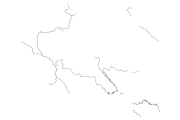geoscientificInformation
Type of resources
Available actions
Topics
Keywords
Contact for the resource
Provided by
Years
Formats
Representation types
Update frequencies
status
Scale
Resolution
-
This Layer shows five major water basins (Norther Basin, Hari Rod-Lower, South Eastern Basin, Northern Basin, Helmand Basin and Nondranage areas in Southern part of Afghanistan.
-

The 5m ALOS DEM was procured from NTT DATA, a company serving as first point of sale of JAXA products.
-
Resource Stress Index (RSI) is defined as the water resource availability in the basin to meet the pressure of the water demand of growing population taking account of environmental changes. The parameter such as such as water availability, water withdrawal, rainfall variation, temperature variation, distance to water source are accounted.
-

Digital line dataset of River network of Central Karakoram National Park (CKNP) area, Pakistan. This dataset is created using topographic sheet maps at scale of 20000.
-

The dataset compiles the grazing routes in the key grazing areas during spring, summer and autumn.
-

Digital point dataset of Government Institution of Central Karakoram National Park (CKNP) area, Pakistan. This dataset is compiled through GPS based field survey conducted in year 2008.
-

Land cover data of Hindu Kush Himalayan region of Myanmar for 2010. This dataset is created using the LandSat 30 meter spatial resolution satellite image of 2010 and includes land cover information for Chin, Kachin, Rakhine and Shan states of Myanmar.
-
Management Capacity Index (MCI): refers to the socio-economic attributes; in the absence of which; responsible for the water vulnerability. The variables such as literacy rate, population without sanitation, access to electricity, drinking water coverage, type of houses, women headed households, incidence of poverty etc are taken into account to calculate the MCI.
-

Bangladesh is one of the most flood affected country in the world. The frequency, intensity and duration of floods has been increased during last few decades. Due to increased population settlements in floodplains and irregular development damage of infrastructure, crop and property has increased creating severe impact on lives and livelihood. Understanding the severity and identification of extent and types of flood damage is highly important to plan effective response. The aim of this study was to develop appropriate methodology to determine extent of flood and damaged areas in near real time basis to support operational response. We have used Sentinel-1 synthetic aperture radar (SAR) images to generate flood extend data for the year 2017.
-

Digital dataset of Land Cover of Charnawati Watershed, Dolakha, Nepal. This dataset is created using GeoEye 0.5 meter spatial resolution satellite image of November 2009 and field verified in 2010. The data was prepared for the Reducing Emission from Deforestation and Forest Degradation (REDD) Pilot Project. This is a joint project of ICIMOD with Asian Network for Sustainable Agriculture and Bioresources (ANSAB) and Federation of Community for Forest Users of Nepal (FECOFUN) funded by NORAD.
 Metadata Catalogue
Metadata Catalogue